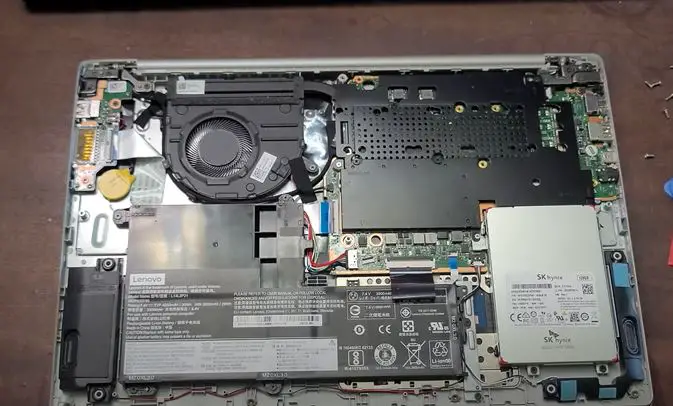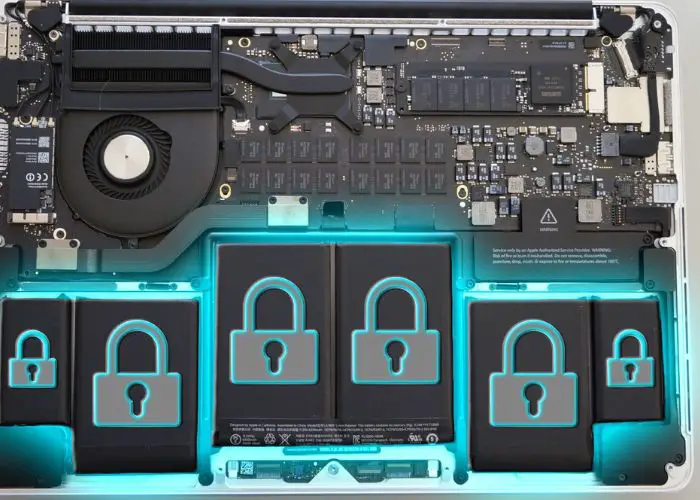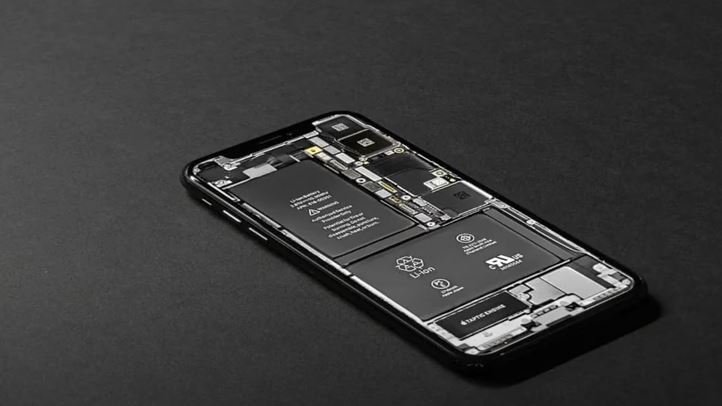Smartphones these days come with a lot of features that require a lot of power. This is why most smartphones use non-removable batteries. Non-removable batteries have some advantages over removable ones.
They are more compact and can hold more charge than removable batteries. They are also less likely to leak, which can damage your phone.

Non-Removable batteries have some advantages over removable ones. They’re less likely to come loose, so there’s less chance of losing power unexpectedly. And, because they’re sealed in, there’s no risk of shorting out the battery by accident.
However, non-removable batteries also have some disadvantages. It can be difficult to replace them when they eventually do wear out. And, if something does go wrong with the battery, you’ll likely have to send your phone back to the manufacturer to get it fixed.
Why Mobile Companies Removed Removable Batteries?
As of late, many phone companies have been removing the option for users to remove their phone’s battery. This has caused some concern and confusion among customers. So why did they make this change?
There are a few reasons why companies might want to do away with removable batteries. For one, it can make the phone thinner and more sleek-looking. It also makes the phone waterproof since there aren’t any gaps where water could get in.
And finally, it just simplifies the manufacturing process overall. Some people argue that removable batteries are a essential feature, especially if you’re someone who is constantly on the go and needs to be able to charge up your phone quickly. Others say that it’s not a big deal since most people never actually remove their phone’s battery anyway.
At the end of the day, it really comes down to personal preference. Some people prefer having a removable battery in case of emergencies, while others don’t mind sacrificing that feature for a thinner and more stylish phone.
What Does a Non-Removable Battery Mean?
If you’re like most smartphone users, you probably don’t think much about the battery in your phone. But if you’re in the market for a new phone, you may be wondering what all this talk about non-removable batteries means. In short, a non-removable battery is a battery that cannot be removed from the phone without special tools.
This may seem like a silly design choice, but there are actually several advantages to having a non-removable battery.
| 1 | It makes the phone more water resistant. If your phone falls in water, you don’t have to worry about the battery coming loose and ruining the electronics. |
| 2 | It prevents thieves from being able to easily remove the battery and sell it separately. |
| 3 | It allows manufacturers to make thinner phones since they don’t have to leave room for a removable battery door. Of course, there are also some disadvantages to having a non-removable battery. |
The biggest one is that if your battery starts acting up, you can’t just swap out a new one – you’ll need to send your phone back to the manufacturer or take it to a repair shop. Additionally,Non-removable batteries also tend to have shorter lifespans than removable ones since they can’t be replaced as easily when they start losing capacity.
Why Do Laptops Have Non-Removable Batteries?

Laptops have non-removable batteries for a number of reasons. First, laptops are designed to be portable devices, and having a removable battery would add unnecessary bulk and weight. Second, laptop batteries are sealed inside the casing to prevent them from being damaged by external forces.
Third, laptop batteries are designed to last for the life of the device, so there is no need to remove and replace them. Finally, many laptops come with built-in backup power supplies that allow them to continue running even if the main battery is depleted.
What is the Benefit of Non-Removable Battery?
The benefit of a non-removable battery is that the device can be made much smaller and lighter. This is especially beneficial for handheld devices such as smartphones, where every ounce counts. In addition, a non-removable battery eliminates the need for a door or hatch to access the battery compartment, which can result in a more streamlined design.
Does Leaving the Hatch Open Drain the Non-Removable Battery?
Leaving the hatch open can lead to battery drainage from leaving hatch open. When the hatch is left open, the interior lights or other electrical components may remain on, draining the non-removable battery. It’s important to ensure the hatch is securely closed to prevent unnecessary battery depletion.
Can a Non Removable Battery Be Replaced?
If your laptop has a non-removable battery, you may be wondering if it’s possible to replace the battery. The short answer is: yes, you can replace a non-removable battery, but it’s not always easy.
There are a few things to keep in mind before attempting to replace your non-removable battery.
First, make sure you have the right tools for the job. You’ll need a small Phillips head screwdriver and a putty knife or other thin tool to help pry open the case. Second, be aware that replacing the battery voids most warranties, so proceed at your own risk.
Once you have the proper tools and know what you’re doing could potentially void your warranty,Replacing a non-removable battery is generally pretty straightforward. Start by unscrewing the screws on the bottom of your laptop (you may need to remove some stickers first). Once the bottom panel is off, locate the battery inside – it will likely be attached with some adhesive tape.
Gently pry up on one end of the battery with your putty knife or other thin tool until it pops loose from its adhesive backing (be careful not to damage anything else in the process).
With the old battery detached, carefully insert the new one into place and press down firmly to adhere it to its backing. Then just screw everything back together, power on your laptop, and enjoy hopefully longer-lasting power!

Disadvantages of Non Removable Battery in Smartphones
As technology advances, so do our devices. Smartphones are no exception – they’re constantly getting thinner, lighter, and more powerful. But one area where they haven’t made much progress is in the battery department.
Many smartphones still have non-removable batteries, which can be a real pain if your phone dies and you can’t replace the battery yourself. Here are some of the disadvantages of having a non-removable battery in your smartphone:
1. You Can’t Replace the Battery Yourself
If your smartphone battery dies, you’re out of luck unless you have a warranty or insurance that will cover a replacement. With a removable battery, you can simply buy a new one and replace it yourself. This is much cheaper than having to send your phone away to get a new battery, or buying a whole new phone if your warranty has expired.
2. Non-Removable Batteries Are More Likely to Swell Up and Damage Your Phone
Lithium ion batteries are known for swelling up over time – this is why many phones have bulges on the back after a few years of use. If this happens with a removable battery, you can just pop it out and replace it; but with a non-removable battery, the bulge can put pressure on other components in your phone and cause damage.
In extreme cases, swollen batteries have even been known to burst open and catch fire!
Removable Battery Vs Non Removable Battery
There are many factors to consider when purchasing a new smartphone. One of the most important choices you’ll make is between a phone with a removable battery and one with a non-removable battery. Each option has its own set of pros and cons that you should take into account before making your final decision.
Removable batteries have been around for much longer than non-removable batteries. They’re easy to replace and usually last longer than their sealed counterparts. On the downside, phones with removable batteries tend to be thicker and bulkier.
They’re also more susceptible to water damage since the back cover isn’t always watertight.
Non-removable batteries have become increasingly popular in recent years. They’re often smaller and lighter than phones with removable batteries, making them more comfortable to carry around.
They’re also less likely to suffer from water damage since the entire phone is sealed shut. The biggest downside of non-removable batteries is that they’re not as easily replaced as their removable counterparts. If your battery starts acting up, you’ll likely need to send your phone in for repairs or replacement.
Lifespan of Non Removable Battery
We all know that lithium-ion batteries have a limited lifespan. But what exactly is that lifespan, and why do they die? Here’s a detailed look at the lifespan of non removable batteries, and what you can do to prolong their life.
Lithium-ion batteries are designed to last for a certain number of charge cycles. A charge cycle is defined as a full discharge followed by a full recharge. After a battery has been through a certain number of charge cycles, its capacity will start to decline.
The exact number of charge cycles varies depending on the battery, but it’s typically around 300-500. So if you regularly use your device until the battery is completely dead, you can expect the battery to last for 1-2 years before needing to be replaced. However, there are several things you can do to prolong the life of your lithium-ion battery.
| First | Avoid fully discharging the battery if possible. If you only need 50% power, don’t let it drain all the way down to 0%. |
| Second | Try not to expose the battery to extreme temperatures (either hot or cold). |
| Finally | Don’t leave your device plugged in all the time when it’s not in use – this will put unnecessary strain on the battery. |
By following these simple tips, you can help extend the lifespan of your lithium-ion battery and keep your device running strong for longer.
First Phone With Non Removable Battery
The first phone with a non-removable battery was the Motorola StarTAC, released in 1996. This was followed by the Nokia 3210 in 1998. Both of these phones were extremely popular, and helped to set the stage for the modern smartphone market.
Today, most smartphones have non-removable batteries. This is because removable batteries add extra bulk and complexity to a device, and are generally less reliable than sealed units. Non-removable batteries also make it easier for manufacturers to offer water-resistant designs.
There are some advantages to having a removable battery, however. For one thing, it’s easy to swap out a dead battery for a fresh one if you’re away from home or a power outlet. And if your phone does have any problems with its battery, you can usually replace it yourself without having to send the whole device back to the manufacturer.
Do you prefer phones with removable or non-removable batteries? Let us know in the comments!
Non Removable Battery Phone

When it comes to phone batteries, there are two different types: removable and non-removable. As the name suggests, a removable battery can be taken out of the phone, while a non-removable battery is glued in place and cannot be removed without damaging the phone. There are pros and cons to both types of batteries.
Removable batteries can be replaced easily if they die or get damaged, but they are also more likely to do so since they are not as tightly sealed in place as non-removable batteries. Non-removable batteries may not be as easy to replace, but they tend to last longer since they are better protected from the elements. So which type of battery is better?
It really depends on your needs and preferences. If you want an easy-to-replace battery, go for a removable one. But if you want a battery that will last longer, go for a non-removable one.
Bring Back Removable Batteries
Removable batteries are a feature that many phone users miss when they switch to a newer model. Newer phones typically have sealed-in batteries that cannot be removed or replaced by the user. This can be frustrating for users who are used to being able to swap out their battery when it starts to die.
There are several reasons why manufacturers have moved away from removable batteries. One reason is that sealed-in batteries allow for a thinner phone design. Another reason is that it can be difficult to make a water-resistant phone with a removable battery.
And finally, manufacturers argue that most people don’t actually replace their own batteries – they just buy a new phone when the old one dies.
However, there are still some advantages to having a removable battery. For one, it’s much easier to replace a dead battery yourself than it is to send your phone in for repair or buy a new one.
Additionally, you can carry around spare batteries so you never have to worry about your phone dying while you’re out and about. And if you do need to replace your battery, you can usually find them for much less than the cost of a new phone.
Do you think manufacturers should bring back removable batteries?
Why or why not? Let us know in the comments!
Why Do Phones Have Battery Life
Most people don’t think about their phone’s battery life until it starts to run low. Then, they’re left scrambling to find a charger or an outlet. But why do phones have battery life in the first place?
The answer is simple: because our phones need power to operate. A phone’s battery is what provides that power. Just like any other electronic device, a phone uses up energy as it runs.
The more you use your phone, the faster its battery will drain.
There are ways to help conserve your phone’s battery life. For example, you can dim your screen brightness, limit your use of apps and features that require a lot of power, and avoid using your phone in extreme temperatures.
By following these tips, you can help extend your phone’s battery life and keep it running smoothly for longer.
Conclusion
Non-removable batteries are used in smartphones for a number of reasons. They allow for thinner phones, they’re easier to seal off from the elements, and they make it possible to have a larger battery capacity in a smaller space. Non-removable batteries also tend to be more reliable, since there’s no risk of damage from removing and inserting them repeatedly.
Related Posts: